Shea really wanted to go and see Turkey. Something to do with a Byzantine Empire??! So I had no expectations or agendas when going to this country. It actually surprised me with all the Religious history it contains and the cheapness of its yummy food (except that Turkish Delight stuff, that is nasty).
One of the first things we saw was the Shrine of Virgin Mary. It is believed that she spent her last years here before ascending to heaven. She spent her time here with St. John who worked to spread Christianity throughout the area.
Like all things old, it was forgotten and lost for many, many years and then re-discovered in 1812. A German nun, named Sister Anne Catherine Emmerich. She awoke one night in a trance with stigmata and visions that included the Virgin Mary and Apostle John travelling from Jerusalem to Ephesus. She described Mary's house in detail and state that Mary died at the age of 64 and was buried near her home but only the coffin and burial shroud were left when it was opened a few years after her death. Because of this miracle, the house was then turned into a chapel.
Years after her vision, a French clergyman named Gouyet read the descriptions from Sister Anne's account and travelled to find the House of the Virgin. He found a home that matched the description and sent word to Rome, but didn't receive much of a response. It was not until 1891, when two priests set out to the site with specialists, that the house was analysed and determined to be a match.
Today, it is a religious site for Catholics and Muslims. There is also a spring near by which people believe has healing qualities. Many miracles have happened in the area
 |
| House of the Virgin Mary |
 |
| Inside the house. |
 |
| The bathroom sign which made me chuckle. |
We then continued our tour to Ephesus, which is considered one of the best preserved classical city's of the Eastern Mediterranean.It is essentially a ruined Roman city with a few twists.
 |
| There are many cats in the area which the museum takes care of to keep the rodents away. This was their lunch time. |
 |
| This is what is left of the State Agora. That is where political meetings took place. |
 |
| The Odeon which was used for political meetings and concerts. It had a seating capacity of 1500. |
 |
| Just a piece of old, carved stone. It still looks amazing considering the weathering that it has seen. This is Nike. This is also where the brand Nike was inspired to create the swish logo. |
 |
| The old road of the city. They even carved speed bums into the stone road to slow down the chariots! |
 |
| I'd like to say this is a Temple. It just looked cool. |
 |
| A preserved floor tile |
 |
| These are the public toilets of the city. To use them, you would have to pay an entrance fee. No walls between the toilets. You could have a conversation while doing your business. |
 |
| The Library. There is a tunnel from the Library to the brothels. I guess there was not a lot of studying going on here! |
 |
| Basilica of St. John. It is believed that St. John lived in Ephesus and is buried under this site. He was an apostle, evangelist (author of the Fourth Gospel) and prophet (author of Revelation). |
 |
| The Grotto of St. Paul. It is a cave where frescoes and inscriptions are found, depicting St. Paul and the Virgin Mary. |
 |
| The Great Theatre. It dates back to 2AD and could hold 25,000 people at once. St. Paul preached here. He was also tried and convicted here for not respecting the goddess Diana (which was the main religious symbol of Ephesus before Christianity was fully introduced). he was imprisoned and eventually forced to leave the city. |
 |
| Sitting in the Great Theatre. |
 |
| This is believed to be the first Church dedicated to the Virgin Mary. |
After Ephesus, we made our way to Istanbul where we first visited Topkapi Palace. This was traditionally the royal residence of many Ottoman rulers throughout the years. Today is has a very eclectic collection of artifacts and treasures from various centuries. It was originally built in 1453.
 |
| You kind of feel like you are entering Disney Land when you first come into the palace. |
 |
| The views from the palace looking onto the Marmara Sea. |
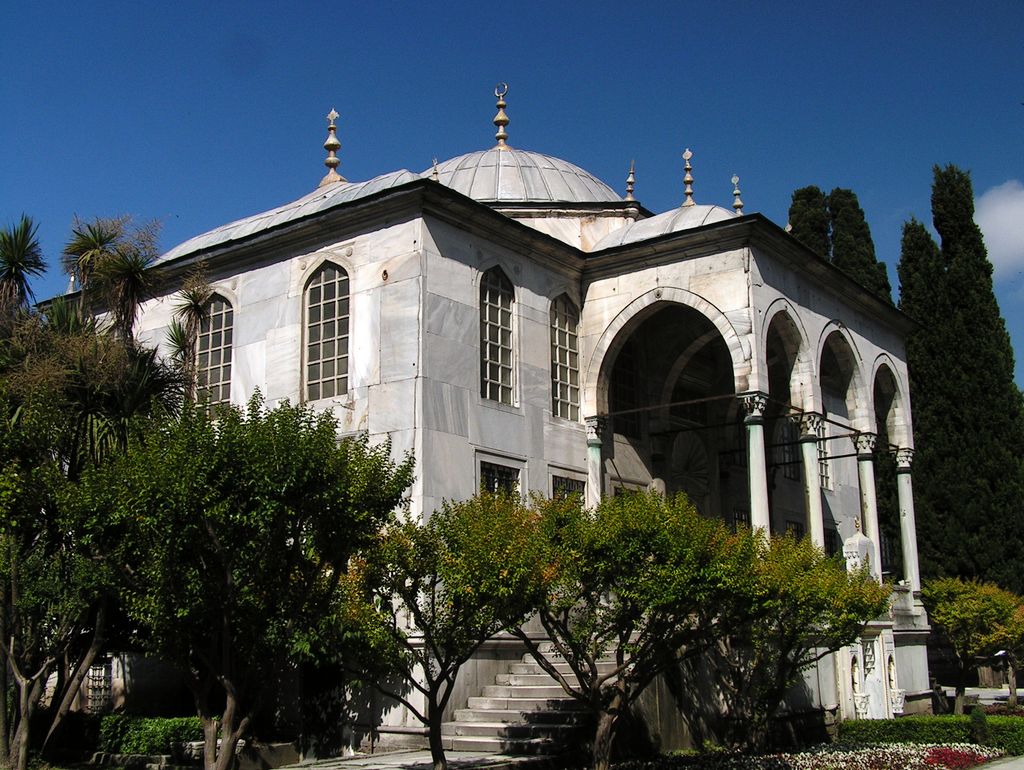 |
| The buildings that make up the palace have a unique, beautiful architectural design. |

 |
| And the colours are very bold. This is the Imperial Hall. |
As you would expect from a palace, it is intricately decorated with fine furniture, mosaics and artifacts.
 |
| Just a normal palace wall. |
 |
| A close up of the tile mosaics. |
 |
Some of the treasures from the Ottoman Empire.
|
Some of the important relics are shown below:
 |
| The sword of the Prophet Mohamed. |
 |
| The Staff of Moses |
 |
| The sword of the Prophet David. |
 |
| The hand bone of John the Baptist. |
Then there is a whole part of the palace just for the wives, children and concubines of the sultan. This area is called the Harem. It was kind of confusing to figure out how that whole system worked. Basically, pretty slave girls were brought in and were provided an education. If that went well for them, the moved to the meritocracy and became ladies-in-waiting to the sultan's concubines and children. If they did well for them, they worked for the sultan's mother and finally, if they showed sufficient aptitude and were beautiful enough, the would serve the sultan.
Sultans were allowed to have four legitimate wives (called kadin) and as many concubines as he could afford. Some sultans had up to 300. The Ottoman dynasty did not recognise the right of the first-born son to inherit the throne. The throne was available to any imperial son. This caused some major issues as all the legitimate wives struggled to have their sons proclaimed heir to the throne.
The Harem was ruled by the valide sultan (the mother of the sultan). She controlled the happenings of the Harem through black eunuch servants and had the power to influence who became a wive and a concubine. She was not one to mess around with.
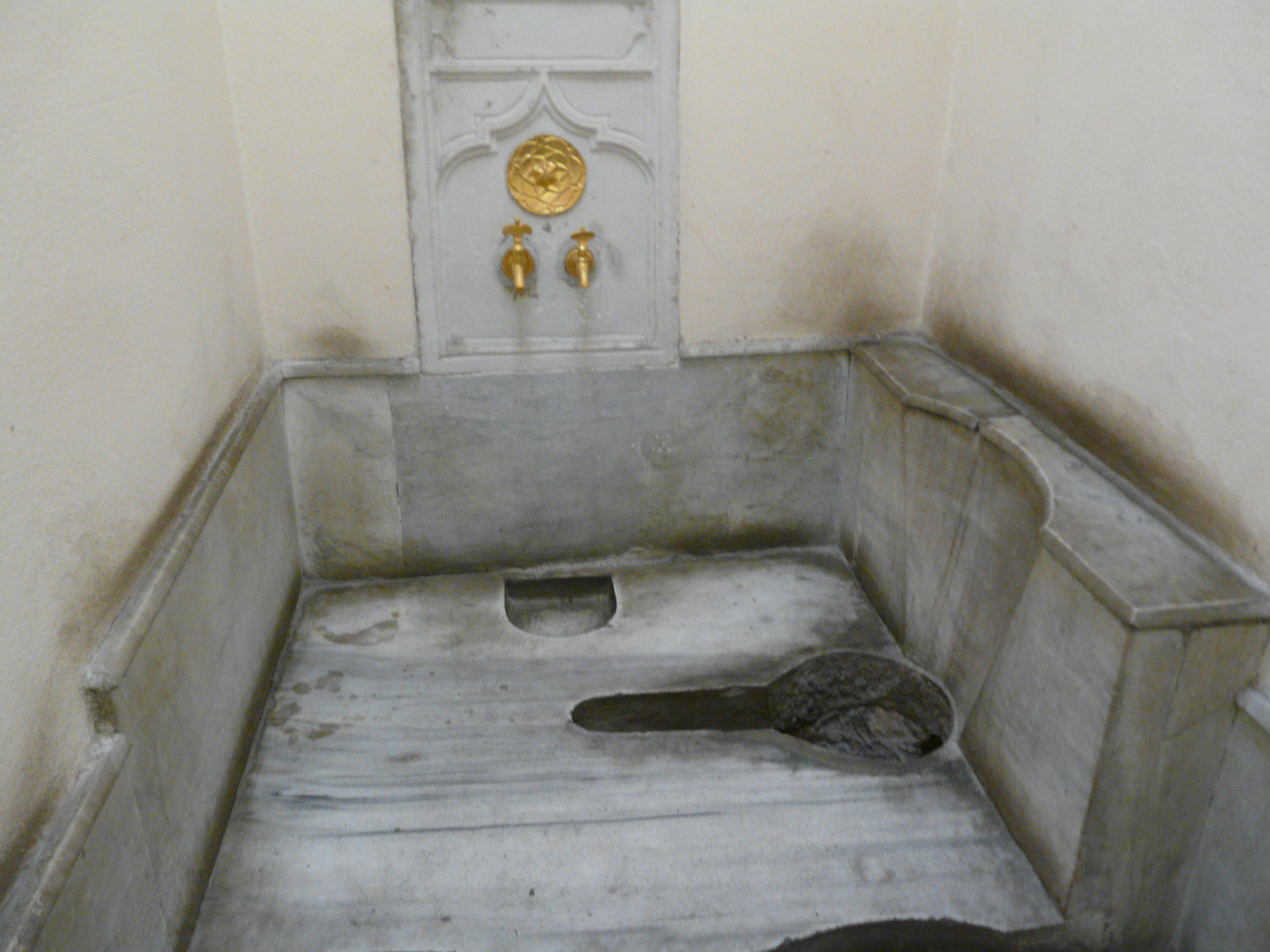 |
| The Royal Toilet. |
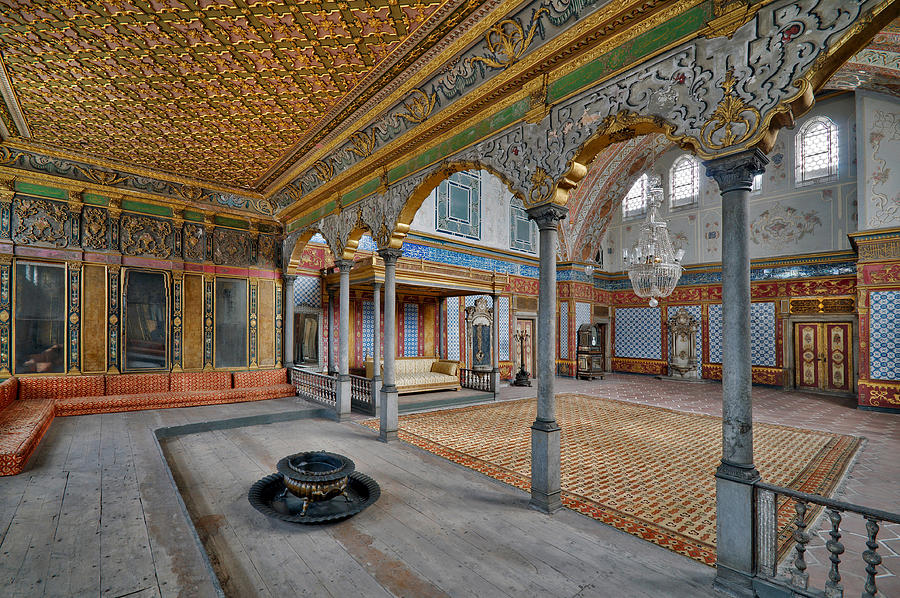 |
| Imperial Hall of the Harem. The Sultan and wives could go here |
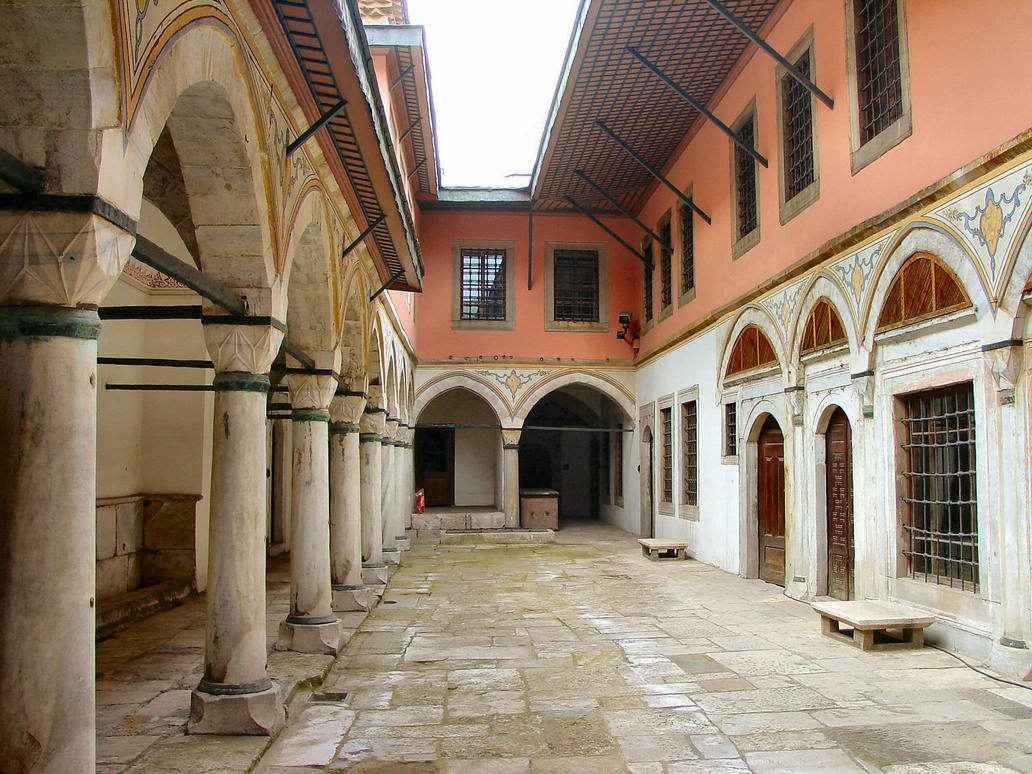 |
| A courtyard for the concubines. |
The next site was the Blue Mosque. This is supposed to be the most impressive, largest mosque build during the Ottoman Empire. I was a bit disappointed with what I saw. It was beautiful, and very big but it did not have the feelings of sacredness that I had expected in entering a mosque. It was very tourist driven and loud, thanks to the many screaming children and tourist who were unable to follow the rules.
 |
| The exterior of the Mosque. |
 |
| The lights hang from the ceiling and are about 8 feet above the floor. I thought the beauty of the mosaics was lost with all these wires from the ceiling. |
 |
| Where the praying happens by men. |
We then moved on to see the Basilica Cistern which was built in 532 to hold water for the Palace. Constructed using columns, capitals and plinths from various ruined buildings, the symmetry and grandeur of the place is breathtaking. It could hold 80,000 cubic metres of water at one time. Again, it became lost over time and was not discovered again until 1545.
 |
| Basilica Cistern. |
 |
| An example of reusing pillars. This is the head of Medusa upside-down. |
 |
| We watched the boat traffic on the water near Galata Bridge I have no idea how they don't all run into each other or hit the bridge. It was crazy! |
We then went to the Aya Sophia which was built in 537 by Emperor Justinian of the Roman Empire. It reigned as the greatest church in Christendom until 1453 when it was converted into a mosque. When converted, all Christian art and mosaics were plastered over, preserving them until 1935, when the mosque was converted into a museum. They were very impressive, with intricate patterns that together formed a piece of art.
 |
| The interior. Mind the scaffolding. They are working to preserve the mosaics. |
 |
| Some of the mosaics preserved. |
 |
| The details. |
I think the best thing that we did see in Istanbul was the Kariye Museum. A bit of a trek from the other tourist spots, we got to ride their local train system and manoeuvre our way through the streets (avoiding getting hit by cars) to find this little gem. Originally built as a church in the late 11th century, it was converted to a mosque. This conversion did an excellent job preserving the mosaics which depict various scenes of the life of the Virgin Mary, and Jesus.
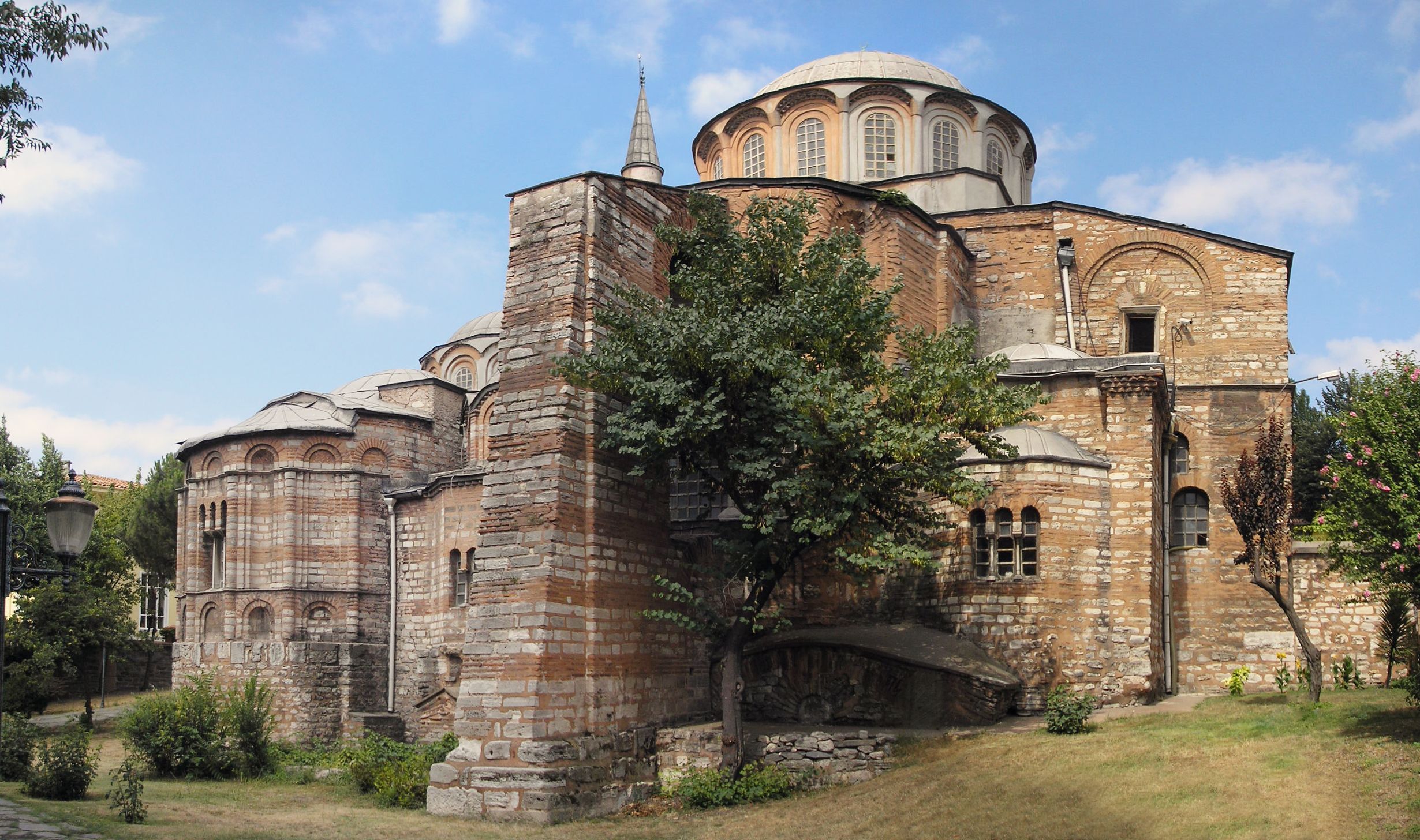 |
| The exterior. |
 |
| Mosaic. |
 |
| Mosaic. |
 |
| Mosaic |












































No comments:
Post a Comment